#position sensor market
Explore tagged Tumblr posts
Text
Position Sensor Market is projected to grow at a CAGR of 10.5% by 2027. Smart farming practices, precision agriculture & government support driven the Position Sensor Market
#position sensor market#position sensor market size#position sensor market share#position sensor market trends#position sensor market growth#position sensor market forecast#position sensor market analysis#position sensor market research#position sensor market report
0 notes
Text
5G Position Sensing Market: A Comprehensive Industry Analysis

Introduction:
In the ever-evolving landscape of telecommunications and technology, the emergence of 5G networks has brought about significant transformations across various industries. One such domain experiencing a paradigm shift is the positioning and navigation sector, with the advent of the 5G Position Sensing Market. This article endeavors to provide a comprehensive analysis of this burgeoning market segment, exploring its key components, market dynamics, growth prospects, and the pivotal role it plays in driving innovation.
Understanding 5G Position Sensing:
Before delving into the market analysis, it's imperative to grasp the essence of 5G Position Sensing technology. Unlike traditional positioning systems that rely on GPS or Wi-Fi signals, 5G Position Sensing leverages the ultra-low latency and high-speed connectivity offered by fifth-generation (5G) cellular networks to enable precise and real-time location tracking. This technology holds immense potential across diverse applications, including autonomous vehicles, industrial automation, augmented reality, and smart city infrastructure.
Request for a sample, here: https://www.nextmsc.com/5g-position-sensing-market/request-sample
Market Dynamics:
The 5G Position Sensing Market is propelled by several factors driving its growth trajectory. Firstly, the increasing demand for enhanced location accuracy and reliability in various industries fosters the adoption of advanced positioning technologies including 5G. Moreover, the proliferation of Internet of Things (IoT) devices and the burgeoning trend of connected ecosystems necessitate robust and efficient positioning solutions, further fueling market expansion.
Furthermore, the evolution of autonomous vehicles and the rising focus on improving navigation systems contribute significantly to the market's momentum. Additionally, government initiatives and investments aimed at developing 5G infrastructure and fostering technological innovation play a pivotal role in shaping the market landscape.
Key Market Players:
The competitive landscape of the 5G Position Sensing Market is characterized by the presence of established industry players, innovative startups, and technology conglomerates vying for market share. Key players in this space invest heavily in research and development to enhance product capabilities, expand their geographic footprint, and gain a competitive edge. Collaboration and partnerships between technology firms, telecom operators, and industry stakeholders are also prevalent, facilitating technological advancements and market penetration.
Market Segmentation:
The 5G Position Sensing Market can be segmented based on technology, application, end-user industry, and geography. Different positioning technologies, such as network-based positioning, device-based positioning, and hybrid positioning solutions, cater to diverse application requirements. Applications span across industries such as automotive, healthcare, logistics, retail, and aerospace, each presenting unique opportunities and challenges for market players.
Technological Advancements and Innovations:
The rapid pace of technological advancements in the field of 5G Position Sensing continues to drive innovation and reshape the market landscape. Advancements in sensor technology, machine learning algorithms, and data analytics techniques have enabled the development of more accurate, reliable, and efficient positioning solutions. Additionally, the integration of 5G with other emerging technologies such as artificial intelligence, edge computing, and blockchain holds the promise of unlocking new capabilities and applications in the landscape of position sensing.
Applications Across Industries:
The versatility of 5G Position Sensing technology lends itself to a wide range of applications across diverse industries. In the automotive sector, 5G-enabled position sensing systems play a crucial role in enabling autonomous driving capabilities, improving vehicle navigation, and enhancing overall road safety. In industrial automation, 5G Position Sensing facilitates precise and efficient asset tracking, inventory management, and workflow optimization in manufacturing and logistics operations. Similarly, in healthcare, 5G-enabled positioning solutions enable real-time tracking of medical equipment, patient monitoring, and asset management, thereby enhancing the efficiency and quality of healthcare services.
Market Challenges and Opportunities:
While the 5G Position Sensing Market presents immense opportunities for growth and innovation, it also faces several challenges that need to be addressed. One such challenge is the need for interoperability and standardization across different positioning technologies and protocols to ensure seamless integration and compatibility. Additionally, concerns regarding data privacy, security, and regulatory compliance pose significant challenges to market expansion and adoption.
However, amidst these challenges, the 5G Position Sensing Market also presents numerous opportunities for market players to capitalize on. The growing demand for location-based services, smart navigation systems, and IoT applications offers lucrative opportunities for innovation and market expansion. Moreover, the emergence of new use cases and applications in emerging sectors such as augmented reality, virtual reality, and unmanned aerial vehicles further amplifies the market potential.
Government Initiatives and Regulatory Landscape:
Government initiatives and regulatory policies play a crucial role in shaping the development and adoption of 5G Position Sensing technology. Regulatory frameworks governing spectrum allocation, network infrastructure deployment, and data privacy regulations influence market dynamics and investment decisions. Moreover, government funding and incentives aimed at accelerating the rollout of 5G networks and promoting technological innovation contribute to market growth and ecosystem development.
Inquire before buying, here: https://www.nextmsc.com/5g-position-sensing-market/inquire-before-buying
Market Forecast and Growth Trends:
The 5G Position Sensing Market is poised for significant growth in the coming years, driven by the increasing adoption of 5G technology, advancements in positioning technologies, and the growing demand for location-based services. According to market research reports, the global 5G Position Sensing Market is projected to witness robust growth, with a compound annual growth rate (CAGR) exceeding XX% during the forecast period. Factors such as the proliferation of IoT devices, the expansion of smart city initiatives, and the rise of autonomous vehicles are expected to fuel market expansion and drive innovation in the coming years.
Integration with Smart Infrastructure: The integration of 5G Position Sensing technology with smart infrastructure initiatives, such as smart transportation systems, smart buildings, and smart grids, is expected to drive market growth. By leveraging 5G networks for precise location tracking and monitoring, cities and industries can enhance efficiency, optimize resource utilization, and improve overall sustainability.
Rise of Augmented Reality (AR) and Virtual Reality (VR) Applications: The proliferation of AR and VR technologies in various sectors, including gaming, education, healthcare, and retail, presents new opportunities for 5G Position Sensing technology. By enabling accurate spatial mapping and positioning, 5G networks can enhance the immersive experience of AR and VR applications, opening up new avenues for content creation, entertainment, and interactive experiences.
Emergence of Unmanned Aerial Vehicles (UAVs) and Drones: The increasing adoption of UAVs and drones across industries for applications such as aerial surveillance, package delivery, agriculture, and infrastructure inspection is driving demand for advanced positioning solutions. 5G Position Sensing technology provides UAVs and drones with precise location information, enabling autonomous navigation, obstacle avoidance, and mission planning with unprecedented accuracy and efficiency.
Security and Surveillance Applications: The demand for security and surveillance solutions equipped with advanced positioning capabilities is on the rise, driven by growing concerns over public safety, asset protection, and border security. 5G Position Sensing technology enables real-time tracking and monitoring of assets, personnel, and vehicles, enhancing situational awareness and enabling timely response to security threats and emergencies.
Cross-Industry Collaborations and Ecosystem Partnerships: Collaboration between stakeholders across industries, including telecommunications providers, technology vendors, government agencies, and research institutions, is fostering innovation and driving market growth. Cross-industry partnerships facilitate the development of integrated solutions, interoperable platforms, and standardized protocols, accelerating market adoption and ecosystem development.
Investments in Research and Development (R&D): Continued investments in R&D initiatives focused on advancing 5G Position Sensing technology, improving positioning accuracy, and enhancing system performance are expected to drive innovation and market differentiation. Research collaborations, academic partnerships, and government-funded projects contribute to the development of next-generation positioning solutions, laying the foundation for future market growth and competitiveness.
Conclusion:
In conclusion, the 5G Position Sensing Market represents a dynamic and rapidly evolving segment within the broader telecommunications and positioning ecosystem. With its ability to deliver unprecedented levels of accuracy, reliability, and responsiveness, 5G Position Sensing technology is poised to revolutionize various industries and redefine the way we perceive and interact with our surroundings. A comprehensive industry analysis reveals the immense potential and opportunities inherent in this burgeoning market, making it a focal point for innovation, investment, and strategic collaboration in the years to come. As the market continues to evolve and mature, stakeholders across industries must remain vigilant, adaptive, and proactive in leveraging the transformative power of 5G Position Sensing technology to drive sustainable growth and create value in the digital economy.
0 notes
Text
Position Sensors Market 2023-2030 Comprehensive Outlook, Forecast, and Key Players Analysis
Unraveling the Position Sensors Market
The position sensors market encompasses a diverse array of sensors designed to detect and measure the position, displacement, angle, or motion of objects in various applications. From simple potentiometers and optical encoders to advanced magnetic and capacitive sensors, these devices play a crucial role in ensuring precision and reliability in countless industrial and consumer electronics applications. With the proliferation of automation, robotics, and IoT technologies, the demand for accurate and robust position sensors has surged across industries.
Request Sample Report: https://www.snsinsider.com/sample-request/3404
Diving into Segmentation Analysis
Segmentation of the position sensors market can be based on technology type, application, and end-user industry. Technologies include resistive, inductive, capacitive, magnetic, and optical sensors, each offering unique advantages for specific applications. Applications range from automotive and aerospace to industrial automation, consumer electronics, and healthcare. End-user industries encompass automotive, aerospace, manufacturing, healthcare, and consumer electronics, among others.
Charting the Impact of Innovation
Innovation is at the heart of the position sensors market, driving advancements in sensor technology, miniaturization, and integration. With the rise of Industry 4.0 and the Internet of Things (IoT), there is growing demand for smart, connected sensors capable of providing real-time data and insights. This trend is driving the development of sensors with enhanced features such as wireless connectivity, energy efficiency, and predictive maintenance capabilities. Additionally, the COVID-19 pandemic has accelerated the adoption of automation and robotics in various industries, further fueling demand for position sensors.
A Global Perspective
The adoption of position sensors varies across regions, influenced by factors such as technological infrastructure, industrialization, regulatory frameworks, and market maturity. Developed regions such as North America and Europe lead the market, driven by a strong manufacturing base, advanced technology adoption, and stringent quality standards. Emerging economies in Asia Pacific, Latin America, and Africa are witnessing rapid growth, fueled by increasing investments in infrastructure, automotive manufacturing, and industrial automation.
Navigating the Competitive Landscape
The position sensors market is characterized by intense competition among key players striving for technological innovation and market leadership. Companies such as Allegro Microsystems, Honeywell International Inc., Infineon Technologies AG, and TE Connectivity Ltd. are at the forefront, offering a wide range of position sensing solutions tailored to diverse industry needs. Strategic partnerships, collaborations, and acquisitions are common strategies employed by industry players to expand market presence, enhance product portfolios, and gain a competitive edge.
In Conclusion: Precision for the Future
In conclusion, the position sensors market plays a critical role in enabling precision, control, and automation across industries. As technology continues to advance and new applications emerge, the demand for accurate and reliable position sensing solutions will only continue to grow. By embracing innovation, collaboration, and sustainability, we can unlock the full potential of position sensors and pave the way for a future where precision is the norm, and possibilities are limitless. Let's navigate the precision path together and shape a brighter, more connected world.
Access Full Report Details: https://www.snsinsider.com/reports/position-sensors-market-3404
0 notes
Text
Potentiometer Position Sensors Market
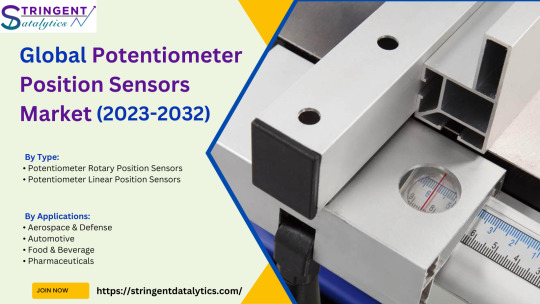
0 notes
Text
Food & Beverage Position Sensors market is anticipated to reach $307 million by 2026 at a CAGR of 7.1% during the forecast period 2021-2026.
#Food & Beverage Position Sensors market#Food & Beverage Position Sensors market share#Food & Beverage Position Sensors market size
0 notes
Text
Indian Crankshaft Position Sensor Market - Forecast(2022 - 2027)
Indian Crankshaft Position Sensor Market Overview
The Indian Crankshaft Position Sensor market size is forecast to reach $628.4 million by 2027, growing at CAGR of 6.28% from 2022 to 2027. Crankshaft Position Sensor is a crucial part of the engine management system that helps the engine in operating more efficiently, by controlling the fuel efficiency and ignition timing. In other words, these sensors monitor the position and the rotational speed of the crankshaft and provide information to the engine management system that ultimately helps in increasing the efficiency level of the fuel injection control system and other engine parameters. Crankshaft and Camshaft position sensors together help the engine management systems task more productively. The growth of the Indian crankshaft position sensor market is mainly driven by the increasing rise in automotive sales and production rate in India, as this sensor is an important part of the engine and without it, vehicles cannot run. Furthermore, government initiatives in the form of regulations for controlling the emission level of carbon footprint is positively affecting the growth Indian Crankshaft Position Sensor. Hence, the above-mentioned factors are fuelling the growth of Indian Crankshaft Position Sensor industry during the forecast period 2022-2027.
Request Sample
Report Coverage
The report: “Indian Crankshaft Position Sensor Market– Forecast (2022-2027)”, by IndustryARC covers an in-depth analysis of the following segments of the Indian Crankshaft Position Sensor Market. By Type: Linear Position Sensor, Rotary Position Sensor, and Proximity Sensors By Technology: Hall-Effect Sensor, and Magnetoresistive Sensor By Contact Type: Contact, and Non-Contact By Output: Analog, and Digital By end-user industry: Automotive, Aerospace & Defence, and Others Key TakeawaysAutomotive industry held the major market share in 2021 and is estimated to witness the highest growth during 2022-2027, owning to the increasing purchasing power and growing sales as well as production rate of automotive. The market of Indian Crankshaft Position Sensor is estimated to witness significant upsurge during the forecast period, owing to the growth of Indian automotive industry. This industry is consolidated with top market players including Allegro MicroSystems Inc., Continental AG, Denso Corporation, Infineon Technologies AG, NXP Semiconductors among others.

Indian Crankshaft Position Sensor Market Segment Analysis - By Type
By Type, the Indian Crankshaft Position Sensor market is segmented into Linear Position Sensor, Rotary Position Sensor, and Proximity Sensors. Proximity sensors segment is analysed to grow at a CAGR of 7.12%, during the forecast period 2022-2027. The growth of this segment is attributed to the rapid industrial growth and high adoption of vehicles in India. Proximity sensors help the drivers in the identification of the position of a nearby object, and alert the driver accordingly. This not just enhances the driving experience but also increases the safety level of the vehicle. Furthermore, the rise in penetration of automation across industries in India, created a huge demand for accurate information regarding the industrial processes which in turn affected the adoption rate of these sensors, as these sensors provides the required information by detecting the presence and position of the objects. Proximity sensors can also help in automating the procedures, resulting in an efficient production process. The above-mentioned benefits create the demand for these sensors in India. To meet such high demand of proximity sensors, market players are launching various advanced products. For instance, in March 2020, Omron Automation introduced its new, highly durable, metal face E2EW Series proximity sensors, with longest object sensing range, to meet the growing demand of the manufacturers of the automotive industry and to reduce the amount of downtime. Such developments will drive the growth of such market during 2022-2027.
Inquiry Before Buying
Indian Crankshaft Position Sensor Market Segment Analysis - By End-User Industry
Based on End-user industry, Indian Crankshaft Position Sensor Market is segmented into Automotive, Aerospace & Defence, and Others. According to Indian Crankshaft Position Sensor Market report of IndustryARC, Indian Crankshaft Position Sensor market size for automotive industry is analysed to grow with a CAGR of 7.40% during 2022-2027, owing to increasing purchasing power and rapid growth in the vehicles production as well as sale. According a report of IBE, Two-wheelers and passenger cars represented around 81% and 13% of market share, respectively, for a combined sale of Indian automobiles in FY20. These factors in turn creates demand for Crankshaft Position Sensor in Indian market, to reduce the emission level of the vehicle and to control the consumption of fuel. Apart from that, growing investment towards the growth of Indian automotive industry also plays a major role. According to a report of IBEF, in FY21, passenger vehicles sales reached 27.11 lakhs units in India. Such growth in sales of vehicle helps in driving the demand for crankshaft position sensors in India. Furthermore, this sensor also helps in determining the position and rotational speed (RPM) of the crank and provides information to the Engine Control Units to control parameters such as ignition timing and fuel injection timing. This in turn helps the vehicles to run more efficiently. Hence, the above-mentioned factors drive the growth of this market during 2022-2027.
Indian Crankshaft Position Sensor Market Segment Analysis – Country Analysis
India is one of the emerging economies with massive growth opportunities across industries including automotive, aerospace and defence, general manufacturing, consumer electronics and others, which plays a major role in the growth of this market as this sensor is an essential part of the engine. A report from IBEF states that, FDI inflow of around $463.55 million was registered in the defence and aerospace sector of India as of June 2020 and this estimation was made on the basis of the information provided by 80 companies. Such high investments create high demand for crankshaft position sensors. Furthermore, the economic growth of this country and increase in disposable income are creating more demand for passenger vehicles, which is affecting the demand for crankshaft position sensors, as this sensor is one of the most important of all engine management sensors, and without it the engine cannot run. Such factors create demand for crankshaft position sensors in India.
Schedule a Call
Indian Crankshaft Position Sensor Market Drivers
Growth of Indian Automotive industry is set to Boost the Growth of this Market:
With the economic development and rise in purchasing power, the demand for automotive vehicles is growing in India, which drives the growth of Indian Crankshaft Position Sensors market. In December 2020, Society of Indian Automobile Manufacturers (SIAM) published a report, according to which, the sales of passenger vehicles increased 4.65% to 264,898 units in November. Similarly, a recent reports of Invest India states that, India is estimated to become world’s third largest manufacturer of passenger vehicles by 2021. Such high demand of vehicles also affects the demand of this sensors, as this sensor is an essential part of the engine, thereby driving the growth of this market. Such a high growth rate of automotive industry will create growth opportunity for the Crankshaft Position Sensor market during the forecast period 2022-2027.
Government’s initiatives to reduce the emission level will fuel the growth:
The government’s initiatives in the form of stringent norms to control the emission level of vehicles is one of the major driving factors contributing towards the market growth, as this product helps in reducing the emission of CO2. Crankshaft position sensors helps the vehicle to run more efficiently by controlling the consumption of fuel, which in turn reduces the emission level of vehicles, and ensures the fulfilment of the norms. Indian Government has imposed tax regulations on emission level, that increases the tax level based on the vehicle emission level. Presence of these types of norms creates appositive impact. Hence, implementation of such norms is analysed to boost the growth rate of Indian Crankshaft Position Sensor market during the forecast period 2022-2027.
Buy Now
Indian Crankshaft Position Sensor Market Challenges
High R&D cost and lack of Standardisation is harming the growth of this market
All though the Indian Crankshaft Position Sensor market is growing rapidly, due to high growth in production of vehicles, but the high research and development cost is creating hurdles for the growth of this market. This market requires huge amount of investment for developing more advanced product. Moreover, the lack of standardization for performance measurement is a major drawback for this market, as precision, non-linearity, accuracy, and resolutions do not have a standard definition, and varies across manufacturer and researchers. Hence, the above-mentioned factor will hamper the growth of this market during the forecast period 2022-2027.
Indian Crankshaft Position Sensor Industry Outlook
Partnerships and acquisitions along with product launches are the key strategies adopted by the players in the Indian Crankshaft Position Sensor Market. As of 2021, the market for Indian Crankshaft Position Sensor industry outlook is consolidated with the top market players. Indian Crankshaft Position Sensor top 10 companies include:
Allegro MicroSystems Inc. Continental AG Denso Corporation Infineon Technologies AG NXP Semiconductors Robert Bosch GmbH Takata Corporation MTS Systems Corporation Autoliv, Inc. Valeo S.A.
Acquisitions/Technology Launches/Partnerships
In October 2020, Yamaha introduced its new product, the 2021 MT-09, an all-new street naked motorcycle that's lighter, more powerful and packs more tech than its predecessor. Yamaha made major changes to the crossplane inline-triple engine. For instance, the engine got new forged pistons, camshaft fracture-split connecting rods, and crankshaft. These changes made this product more advanced than others. In February 2020, Hero MotoCorp announced the launch of the 2020 Glamour 125 BS6 in India and will be in available in two variants. This product features Hero’s Xsens technology and it is equipped with nine different sensors including Bank Angle Sensor, Oxygen/Crank Position Sensor, Throttle Position Sensors, Engine Oil Temperature Sensors, i3s Sensor, Intake Air Temperature Sensor and Vehicle Speed Sensor. In August 2019, a well-known motorcycle manufacturer, MV Agusta launched its new product, MV Agusta Turismo Veloce 800 in India. This product is powered by is powered by a 798cc. three-cylinder which cranks out 110 HP at 11,500 rpm and 83 Nm at 7,600 rpm and it is equipped with counter-rotating crankshaft.
#indian crankshaft position sensor market#indian crankshaft position sensor market size#indian crankshaft position sensor market shape
0 notes
Text
Food and Beverage Position Sensors Market - Forecast (2022 - 2027)
Food and Beverage Position Sensors market
is anticipated to reach $307 million by 2026 at a CAGR of 7.1% during the forecast period 2021-2026. A position sensor is a sensor that allows mechanical position to be measured. Position sensors are an essential component of many industrial processing and monitoring setups including steam generator, water tube boilers, industrial boiler and others. Manufacturers' increased emphasis on accurate measurements and detailed inspection, technological advancements in position sensors, increased demand for cost-effective and highly efficient position sensors, and growing investments by major players in developed countries are the factors that are expected to drive the global market's growth. The growing need for automated systems with higher accuracy and productivity will drive significant expansion in the F&B position sensor market. The sensor assists the maker in tracking the quality of food and beverages in real time. Furthermore, the introduction of
internet of things (IoT)
based sensors will assist F&B producers in monitoring product quality from a long distance, which would drive the F&B position sensor market. Hence, these factors will drive Food and Beverage Position Sensors market size in the forecast period 2021-2026.
Food and Beverage Position Sensors Market Report Coverage
The report:
“Food and Beverage Position Sensors Market – Forecast (2021-2026)”
, by IndustryARC covers an in-depth analysis of the following segments of the Food and Beverage Position Sensors market.
By Product Type:
Contact and Contact-Less
By Position Sensor Type:
Ultrasonic, Radar Microwave, Tuning Fork, Electromagnetic, Capacitance, Others
By Measuring Type:
Point Level Measuring and Continuous Level Measuring
By Geography:
North America (U.S, Canada, Mexico), Europe(Germany, UK, France, Italy, Spain, Russia and Others), APAC(China, Japan India, SK, Aus and Others), South America(Brazil, Argentina and others) and RoW (Middle east and Africa)
Request Sample
Key Takeaways
Rising trends towards automation in food and beverage vertical is anticipated to propel the market growth.
The market expansion of the Food and Beverage Position Sensors Market is expected to be aided by technical improvements in position sensors as a result of the rising demand from the food and beverage sector.
APAC region is dominated the food and beverage position sensor market in 2020. The presence of major F&B manufacturing companies and large number of consumer is going to provide huge growth to F&B flow sensor market.
Food and Beverage Position Sensors Market Segment Analysis- By Product Type
This market is segmented into Contact and Contact-Less on the basis of product type. Contact less segment is anticipated to witness a significant amount of growth in the forecast period 2021-2026. The benefits of Contact-less position sensors, such as longer life, reduced wear and tear, unmatched precision, consistent outstanding performance, rapid reaction, and suitability for a variety of settings, are attributed for the market's rise. Furthermore, non-contact position sensor applications in precise motion control, robotic movement, MEMS accelerometers, vibration monitoring, and other applications help to drive market expansion. The market for Contact-less position sensors is expected to expand due to reasons such as usability in precise measurement, contamination resistance, and high accuracy. Hence, such factors is analyzed to boost the market growth in 2021-2026.
Food and Beverage Position Sensors Market Segment Analysis- By Position Sensor Type
By Distribution channel, Food and Beverage Position Sensors market is segmented into Ultrasonic, Radar Microwave, Tuning Fork, Electromagnetic, Capacitance, Others. Ultrasonic position sensor held the highest market share in 2020. Higher working temperatures and pressures, as well as the presence of steam and potentially corrosive chemicals such as alcohol and solvents, need the use of strong measurement components that can perform reliably under extreme circumstances. Similarly, as machine footprints get smaller, there is a greater demand for sensors that take up less space. All of these aspects have driven the creation of a new line of ultrasonic sensors that will allow producers to achieve optimal performance in a number of food and beverage applications. Ultrasonic sensors have a stainless steel or alumina exterior construction that optimizes performance while adhering to strict food safety requirements. Accurate sensing is critical in applications such as milk metering and beverage distribution to guarantee proper container filling. Ultrasonic metering is a great way to improve accuracy while keeping a small footprint. Thus, above mentioned factors are analyzed to drive the market growth.
Inquiry Before Buying
Food and Beverage Position Sensors Market Segment Analysis- By Geography
APAC held the highest market share of 37% in 2020. The rising need for cost-effective and highly efficient position sensors from the food and beverage industries, as well as technical advancements in optical position sensors, are driving expansion in this area. North America region is anticipated to witness a significant amount of growth in the forecast period 2021-2026. Growing spending by key players in the development of position sensors, as well as an increase in the use of position sensors for level measurement in large alcohol tanks, are contributing factors to market growth in this area. Moreover, the growing number of restaurants, fast-food chains, and meal delivery apps such as grub hub, caviar, and others increase customer access, resulting in substantial development in the food and beverage business in this region. Furthermore, growing consumer desire for organic, natural, and fresh foods as a result of increased health consciousness is a significant driver predicted to boost demand for the food and beverage industry. Because of the shift in consumer food consumption trends and inclination toward a healthy lifestyle, the United States is witnessing a strong demand for gluten-free drinks, followed by Canada and Mexico. Consumers in the United States have good opinions of healthful food items, which may drive market expansion. The favorable regulatory environment, attempts by the Food and Drug Administration (FDA) to encourage gluten-free diets, and further subsidy allocations are expected to enhance the regional market throughout the projected period. The major element driving the strategy of Food and Beverage firms is the constantly altering customer trends. Consumers' lifestyles are changing, and there is a greater demand for processed and ready-to-eat meals, which is fueling the expansion of the food and beverage industry in this area. Thus with the rise of market for food and beverages, the market for position sensors also develops.
Food and Beverage Position Sensors Market Drivers
Increasing focus of manufacturing industry on accurate measurements and detailed inspection are anticipated to drive the market growth
In order to meet industry requirements, the manufacturing business need a high level of precision. To develop high-quality products, manufacturers rely on two critical parameters: measurement precision and thorough inspection. A position sensor detects a number of important properties such as profiling, width, height, step, gap, V-gap, edge, angle, bend, groove, and surface. The profiles on various item surfaces are also detected, measured, and evaluated using these sensors. When the position sensor is linked to the analytics program, many measurement jobs become much easier. As a result, the position sensor is helpful for automating, testing, or monitoring operations where displacement, distance, length, or position characteristics need to be detected.
Rising trends towards industrial automation tends to boost the market growth during the forecast period
Manufacturers in every industry are always under pressure to boost earnings while lowering expenses. Furthermore, the food and beverage sector is under pressure to adhere to FDA and other food safety and quality requirements. Automation is an obvious way to alleviate these constraints, since automated processes have been shown to boost efficiency, improve traceability, and preserve the brand's reputation while adhering to the necessary laws. According to the World Health Organization, 600 million people worldwide become unwell after eating contaminated food each year, with 4,20,000 deaths, resulting in the loss of 33 million healthy years. As a result, rising concerns about food safety and cleanliness have driven the use of automation in the food and beverage sector to maintain sanitary standards. This in turn drives the market growth for position sensor market.
Food and Beverage Position Sensors Market Challenges
High cost of ownership restrains the market growth
A position sensor is manufactured using numerous components, such as position magnets, sensing rods, diagnostic light-emitting diodes (LEDs), and connectors, which are supplied by multiple vendors. For instance, the average price of a crankshaft position sensor replacement cost is between $194 and $258, with the labor costs estimated between $104 and $133, while the cost of the parts is generally between $90 and $125. The major challenge for the companies is to increase these manufacturing capabilities, as well as reduce the overall cost of production.
Buy Now
Food and Beverage Position Sensors Market Landscape
Technology launches, acquisitions, Partnerships and R&D activities are key strategies adopted by players in the Food and Beverage Position Sensors market. In 2020, the market of Food and Beverage Position Sensors industry outlook has been fragmented by several companies. Food and Beverage Position Sensors top 10 companies include:
Hauser Management AG
GEMS Sensors Inc
First Sensor AG
ABB Ltd
Siemens AG
Endress
SICK
PCB Piezotronics
IFM
TR Electronics
Turck, among others.
Acquisitions/Technology Launches
In October 2020, sick launched new product for non-contact measurement of speed and length. With the SPEETEC®, SICK is expanding its product range for speed and length measurement of objects moving in a linear path to include technology that measures directly on the material surface. The non-contact sensor is able to measure a wide range of web and continuous materials, as well as blanks with an accuracy of just 4 μm.
Relevant Report Titles:
Position sensors Market – Forecast (2021 - 2026)
Report Code: AIR 0028
Food and Beverage Flow Sensor Market – Forecast (2021 - 2026)
Report Code: AIR 0190
For more Automation and Instrumentation Market reports, please click here
#Food and Beverage Position Sensors Market size#Food and Beverage Position Sensors Market share#Food and Beverage Position Sensors Market price
0 notes
Text
#Automotive Gear Position Sensor Market#Automotive Gear Position Sensor Market Size#Automotive Gear Position Sensor Market Share#Automotive Gear Position Sensor Market Trends#Automotive Gear Position Sensor Market Forecast#Automotive Gear Position Sensor Market Statistics
0 notes
Note
Recently I took a panorama of the Pittsburgh skyline at night that got a positive response. That was done on the spur of the moment with an iPhone. I want to do that again and more, but this time with a dedicated camera setup. It's been years since I've had one, so I'm basically starting over again. I'm mostly interested in getting day and night cityscapes, and maybe the carryings-on at this year's Anthrocon. Would you have any particular knowledge to pass on as I set off on this journey?
Since you didn't specify a budget I'm going to assume it is in the $10K range.
And you're probably thinking I'm going to suggest a Leica. Every dentist and his brother (who is also a dentist) gets a Leica. But I just can't take a camera brand seriously when they charge you an extra $2200 for the privilege of not being able to shoot in color.
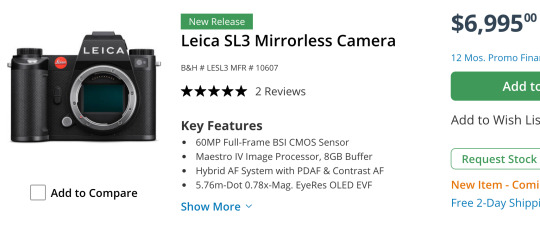

Sure, you can hit a single button in Lightroom to get B&W and save some money, but then you won't be able to brag about how limiting yourself to only shades of gray has opened up new artistic pathways in your brain while a clueless person responds in mumbles during their root canal.
What you really want for your landscapes is a Hassie.
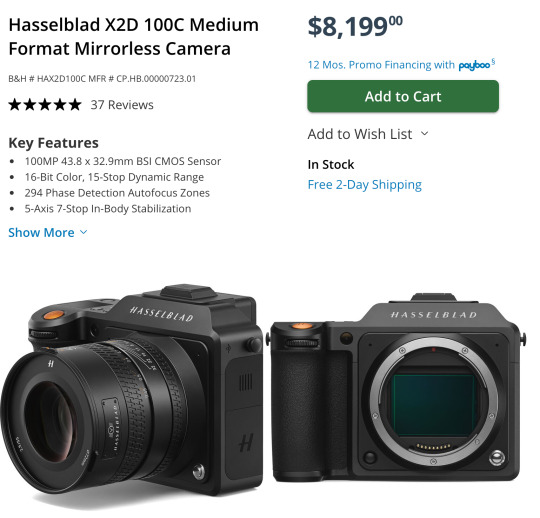
They were the first camera on the moon! How could you *not* want a Hasselblad? That is some camera gorgeousness right there. And it's so reasonably priced*!
*compared to their previous $40,000 camera systems.
And if you are doing landscapes with the Hassie you'll need a nice wide angle lens to go with it. This one is actually quite affordable*!
*compared to their previous $8000 lenses.
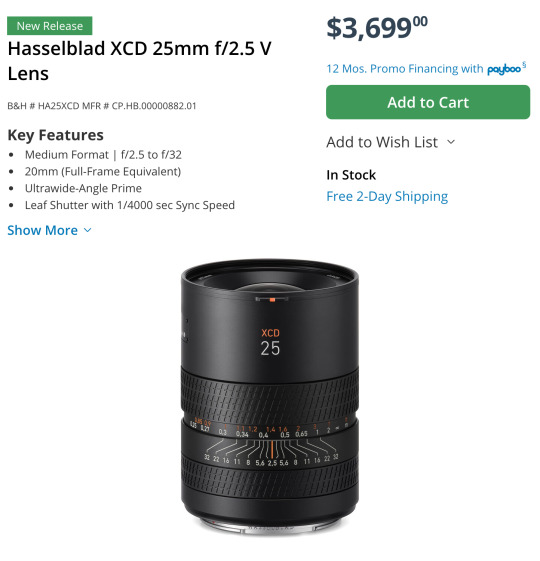
Can we all agree that is a work of art? They even use their H logo as the knurling.
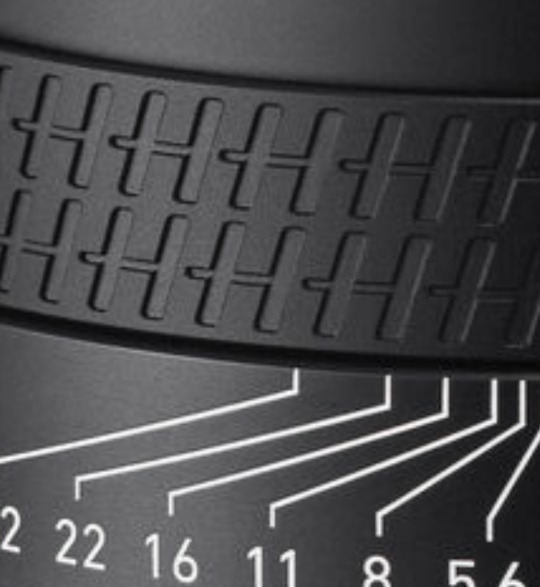
That is just so... extra. And I love it.
Out of the entire alphabet I've heard Hs give you the best grip.
Man, I almost wish I was a dentist just so I could buy a fancy camera.
Sorry... I was just having a little fun.
I never get to recommend the super cool expensive cameras. Because, ya know, the economy and the fact that only dentists have Hasselblad money.
You probably think I'm being silly but there actually is an entire community of dentist photographers keeping the high end camera market alive.
Okay, let's get started...
Landscape Buying Guide
Opening Thoughts
For landscapes I would highly suggest a full frame camera and a high quality wide angle lens.
Full frame has several advantages but it is not necessary. You can go with a smaller sensor like APS-C and get great images. Personally I would not go any smaller, but there have been some great landscapes taken on micro 4/3 and even smartphones. Technique, knowledge, experience, and composition will usually win the day over a camera, but having a nice camera makes things a lot easier.
At this point, with full frame options being very affordable now, the main reason to get a smaller sensor is if you want a smaller system that is easier to carry for extended periods and easier to pack when traveling. Or if you aren't sure you want to take on photography as a hobby, you can get an old APS-C DSLR for under $200 to learn with and test out.
So if you need a very cheap OR very compact system, APS-C and Micro 4/3 might be worth considering, but a bigger sensor will cause less frustration most of the time.
Froggie Note: The expensive Micro 4/3 and APS-C systems are the compact ones. The cheap systems are about as bulky as full frame.
The biggest advantages to full frame are low light shooting, lens selection, and field of view. Full frame cameras have many, many more lenses to choose from. And since the sensor is bigger, it is much easier to get a wider field of view that is often needed for landscapes. And the high ISO noise performance tends to be better on full frame.
However, you can use full frame lenses on APS-C camera bodies within the same ecosystem. They just get a little... zoomier. Roughly 1.5x zoomier. A 35mm acts like a 50mm, for example. So if you want to spend a little less now you can get an APS-C camera with a full frame lens and then upgrade to full frame later on without having to buy a new lens. Full frame lenses work on APS-C bodies but not the other way around.
Most landscapists have a really solid 16-35mm lens and that covers almost all of their needs. So I would suggest something comparable. Please don't get suckered into some crazy 18-300mm superzoom. Just get the focal range you need for the photos you want to achieve.
A purpose-built lens always outperforms one that was made to do everything.
As far as where to get used gear, I highly recommend using KEH or MPB when buying used camera bodies. They check every device and offer between 3 and 6 months warranty to make sure the device won't crap out on you. Lenses are typically a lot more robust and a safer thing to buy on eBay or Facebook Marketplace if you can find a better deal. But the security of having a warranty and a return apparatus if something goes wrong might be worth the extra price when using these two sites.
I am going to recommend Canon, Nikon, and Sony systems. I feel they have the most complete ecosystems with gear that spans all budget ranges. I'm not saying there aren't good cameras from other brands, but you have to remember every camera has an ecosystem surrounding it. There are accessories and upgrade paths and niche lenses that may not be available with other brands. I think Fuji has some tempting options and if you like the look of vintage film photography, their emulation options are quite stunning. Their cameras are also quite attractive and have very satisfying knobs. But I still can't recommend them unless you have a specific reason for wanting their gear.
Just remember that for every Canon DSLR I recommend there is a comparable Nikon option available as well. There are more lenses for a Canon full frame DSLR body than any other brand with Nikon coming in a close second.
So if you choose not to go mirrorless yet, the Canon and Nikon DSLR camera ecosystems are immense and have tons of gear and accessories available to go with them. And since used gear holds up really well, those ecosystems will survive for decades.
Should you buy a mirrorless camera or a DSLR?
Mirrorless cameras are the latest camera technology for interchangeable lens camera systems. At this point they are superior in every aspect and they continue to improve year by year. Because of that, used DSLRs have plummeted in price. This allows people greater access to a starter ILC (interchangeable lens camera) without a significant investment. You can get professional quality images on either format, but mirrorless has a shallower learning curve and much better automatic modes.
The in-body image stabilization (IBIS) stabilizes *every* lens and the eye tracking autofocus make "focus and re-compose" extinct. These are huge selling points for a lot of people. With IBIS you can take photos with up to 2-4 second shutter speeds without a tripod. And never missing focus on a human or animal or bird is pretty cool too.
DSLR camera bodies are no longer being designed by most of the major manufacturers. Thankfully Canon and Nikon developed plenty of bodies and lenses, so you will always have options and upgrade paths. But you will not be able to upgrade to systems with the latest advanced features.
The best DSLRs available are probably the Nikon D850 and the Canon 5D Mark IV. That is as good as it will ever get. The technology ends there. So if you want to enter an active camera ecosystem then you will have to get a mirrorless camera.
DSLR Camera Systems
Full Frame DSLR Camera Bodies
Canon
If you buy a used DSLR, there are some very affordable full frame options. In fact, the classic much-praised budget full frame Canon 6D can be had for under $300 right now.
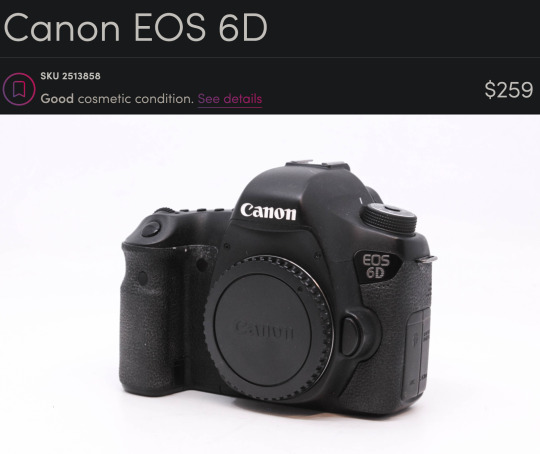
This is an old camera. It has no fancy features. It only has 20 megapixels. It just does what it says on the tin. But it has a big sensor and a *ton* of really cool lenses available for it.
If you are specifically looking to create really high resolution panos, you could also look at the 50 megapixel 5DS R for around $1000.
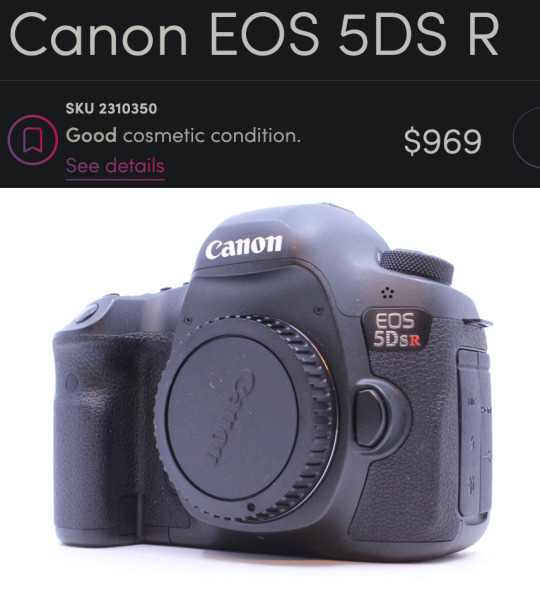
There is a community of landscape pano-maniacs that love to create "gigapans" that have endless amounts of detail where you can zoom in and find new details in every photo. I was only able to create a 120 megapixel photo, but you can still find things like people starting a campfire and a dude fishing and a truck on a far off bridge. So even though this seems expensive for a DSLR, you are looking at another thousand bucks to find anything with more megapixels than this bad boy, so it is quite a good deal relatively speaking.
Nikon
Probably the best DSLRs ever made were the Nikon D800 series and you can get the Nikon D800 for $464.
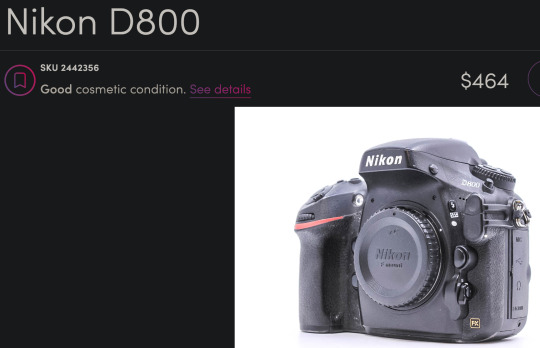
This is a newer camera than the 6D with more megapixels (36) and a better sensor. It also has a more modern autofocus system and about 3 more stops of dynamic range which can come in handy for landscapes. This is an incredible camera for this price.
APS-C DSLR Camera Bodies
If you aren't sure you want to commit to this hobby, you can look into a Canon APS-C sensor body like the Canon Rebels and Canon 60D through 90D models and get good results.
And there are many Nikon DX APS-C bodies that would be great starter cameras as well. If you get a Nikon, you'd have an upgrade path to the D800 if you get hooked by the photography bug. I would miss a few very special Canon lenses like the 100mm f/2.8L macro and the 400mm f/5.6 telephoto but I'm sure I could figure out some reasonable Nikon alternatives that would do roughly the same thing.
Canon APS-C
There is a Canon 60D for $139 right now that would be perfectly adequate for landscape work on a tripod.
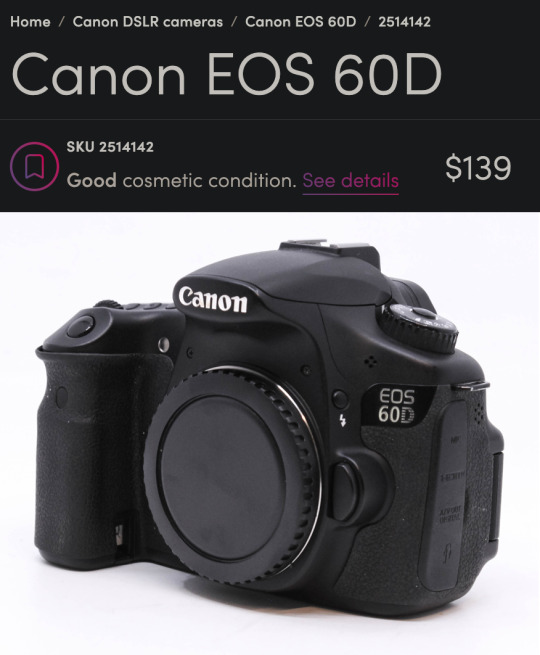
That was my first camera and I took some very nice photos with it. Only 18 megapixels but it has a very convenient flippy screen which was really helpful for a disabled photographer trying to get low angles.

This was in 2014 and I didn't know what I was doing but that is a pretty stellar-looking sunset for a (now) $140 camera.
Nikon APS-C
And the Nikon D3400 would be a great option as well at around $184.
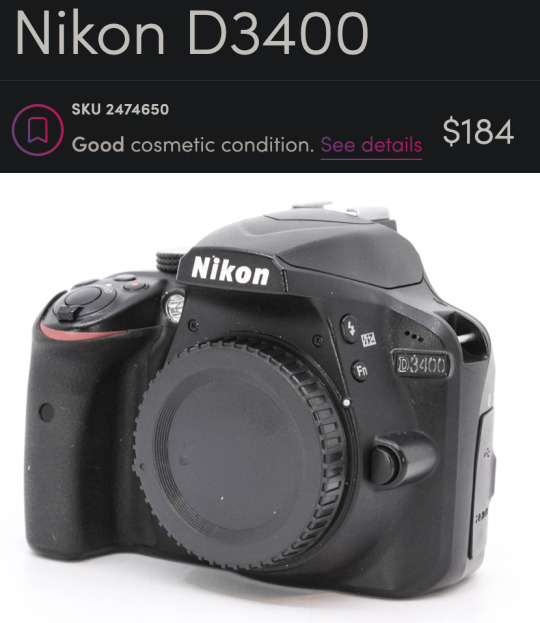
You get some extra megapixels (24) and it is a bit newer than the Canon. I get the sense that used Nikon DSLRs give you more value for your money right now but I don't have a large enough sample size to confirm that.
Full Frame DSLR Lenses
Froggie Note: I am recommending full frame lenses even if you choose an APS-C DSLR body so you have an upgrade path. But also very few purpose-built APS-C lenses had superior glass. Just remember, crop sensor APS-C cameras add ~1.5x to your focal length. So a 16-35mm will have the equivalent field of view of a 24-50mm lens. Still quite acceptable for landscapes, but you may benefit from doing panoramas more often. And if you upgrade to full frame down the road, you'll already have the ideal lens.
Canon DSLR Lenses
If you get the 6D or another Canon you could pair it with the beloved-by-landscapists Canon 16-35mm f/4L.
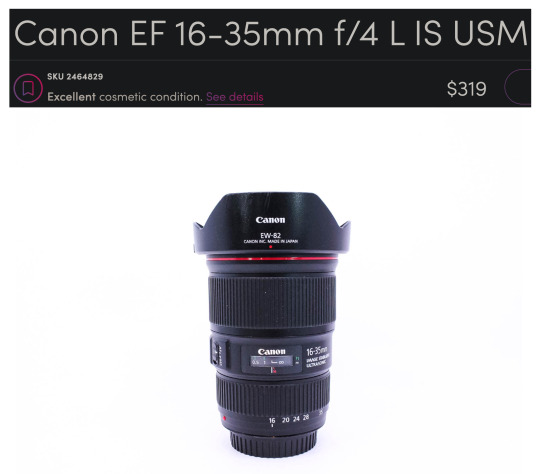
Honestly, it is blowing my mind you can get that combo for under $600. Me from 12 years ago is super jealous right now.
If you are worried you might need something to work in lower light and still want a zoom, the f/2.8L starts at around $434.

This might be the most famous landscape lens of all time. Kinda boggles the mind how many gorgeous vistas this thing has captured the light of.
If you can live without the zoom, you could get a much sharper prime lens that can also be used in even lower light. A used Sigma 24mm f/1.4 Art lens is $439 would be a fantastic option.

24mm is still a very good focal length for landscapes and the sharpness of this lens lends well to panoramic stitches. Seriously, these art lens are so freaking sharp. Although 35mm is typically preferred for most street photography, I think this would do great for that purpose as well. It couldn't do close up portraits, but 3/4 and full body portraits would look great. I also love this focal length for doggos. It enlarges their heads a bit which enhances adorable-ness.
Though I probably wouldn't recommend the 24mm on APS-C for landscapes as it would put you near a 40mm full frame equivalent field of view.
Nikon DSLR Lenses
And on the Nikon side of things you could get the Nikkor 16-35mm f/4 for $399.
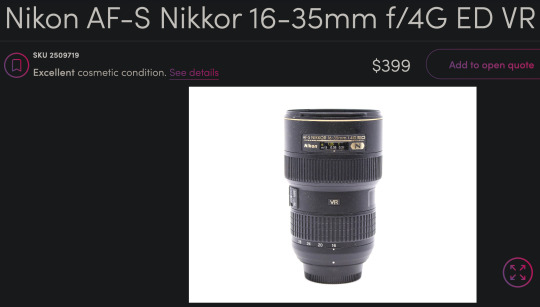
This is a great lens too. Very comparable to the Canon L glass. And paired with that D800 you would have a better shooting experience than with the 6D if it fits within your budget.
It's a little harder to find, but you can also get that same Sigma 24mm f/1.4 Art lens for Nikon at around $528 used on Amazon and in the $400 range on KEH and MPB when it is available.
The older and softer Nikkor 28mm f/1.8 is a little more affordable and easier to find.
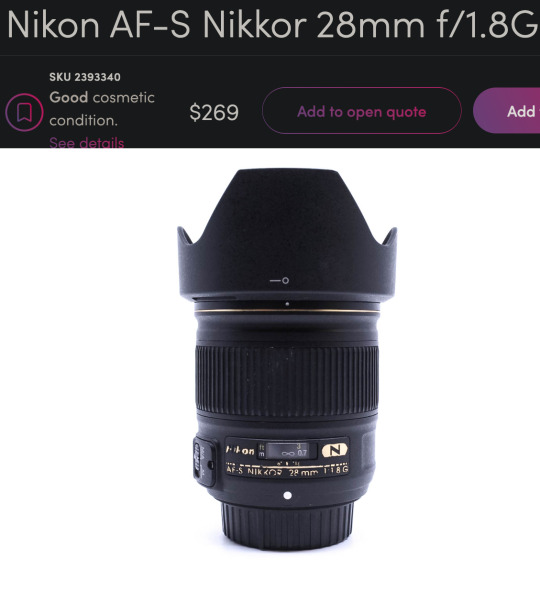
What if you are not a dentist but are willing to save up for something a little nicer?
Enter the world of...
Mirrorless Camera Systems
Sony currently has my favorite ecosystem of mirrorless cameras and lenses and they are consistently ahead of the other brands as far as technology and features. In fact, many other manufacturers use Sony sensors. They literally supply their competition with their own tech. They are also pretty good about updating firmware—even with older models. So I feel like Sony has a lot of future-proofing advantages over other brands. Sony has a great selection of 3rd party lenses like Sigma, Tamron, Viltrox, Laowa, Samyang, etc. These lenses often have nearly the same optical quality as Sony's G Master lenses at a fraction of the price.
Full Frame Mirrorless
Currently, I think the best value full frame mirrorless camera for landscapes would be the Sony a7R III.
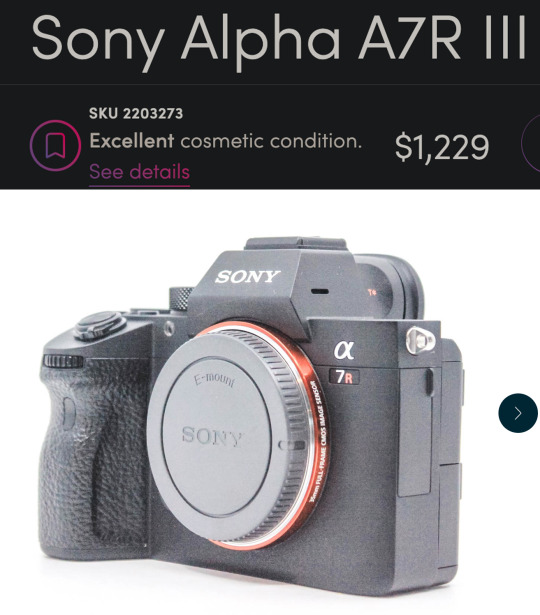
This is very nearly a top-of-the-line landscape camera for a little over $1200.
That might sound like a lot, but I want to be clear...
This isn't just decent. This isn't "good enough." This is a spectacular professional grade full frame camera.
10 years ago you could spend $6500 for a *worse* camera. 5 years ago you could spend $3000 for a *worse* camera.
It can do every genre of photography except for maybe fast paced sports/action. It has an amazing 42 megapixels—which are not necessary but they do make editing and printing a lot less of a headache. The file sizes can get a little big, but storage is a lot cheaper than it used to be.
Oh, and it can be used for professional quality 4K video work too.
The a7R III comes with all of the modern bells and whistles including in-body stabilization (IBIS) so you can handhold at very slow shutter speeds. It has one of the best autofocus systems—complete with eye tracking. But not just human eyes! Dog eyes. Cat eyes. Bird eyes. If it has an eye, the Sony can probably lock focus on it. And it has an admirable 10 fps burst shooting mode.
APS-C Mirrorless
If you want to enter the Sony ecosystem but can't afford full frame quite yet, you could do the a6400 for about $600.
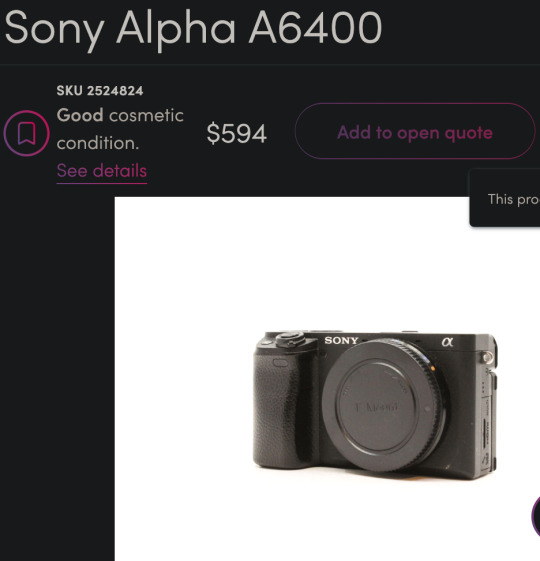
You still get the eye-tracking and the in-body stabilization, but you will lose some image quality at higher ISOs due to the smaller sensor size. However, you can get the same full frame E-mount lenses for it and upgrade to a bigger sensor later on and not have to buy new lenses.
Mirrorless Landscape Lenses
I think a good value landscape lens would be the very impressive Tamron 20-40mm f/2.8.
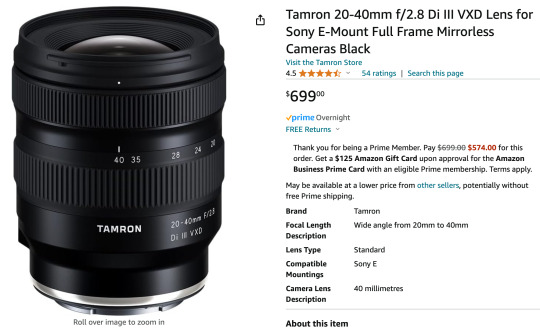
This is a newer lens so there aren't many deals on used options yet. But this is still a great price for the quality and versatility you get. You will never regret spending a little more on glass.
The 20mm range can fit an entire cityscape in the frame without needing to do a panorama. But if you zoom to 40mm and mount the camera vertically, you could stitch together several photos to get well over the 100 megapixel range.
Also, the 40mm focal range is long enough to do street photography and even head & shoulder portraits. The wide f/2.8 aperture combined with the high-ISO friendly full frame sensor and in-body stabilization means you can shoot in very low light without a tripod. You can also get some great pictures of stars if you travel to someplace with minimal light pollution.
The cheapest landscape zoom lens I could find was the Sony 16-35mm f/4 at $384.
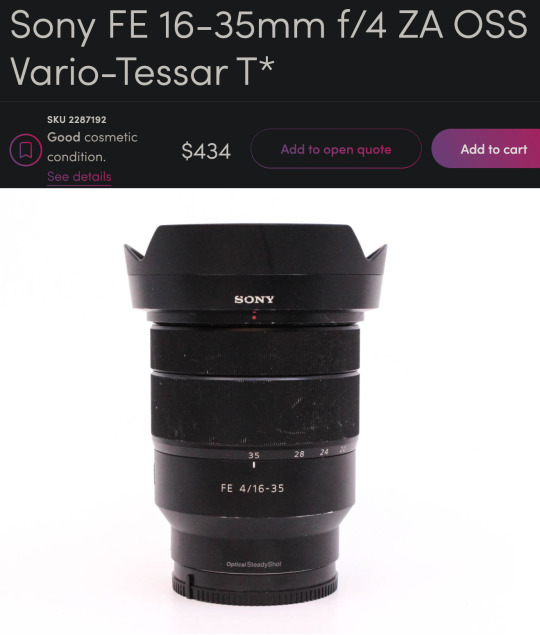
It's one of Sony's older lenses and may not take advantage of all of the a7R III's pixels, but it would be a good option to get you started in this system and upgrade the lens later on.
Mirrorless Prime Lenses
Zoom lenses are great but you have to spend more to get tolerable quality. Kit zooms can be softer than even the tiny plastic lenses on your phone. So a great way to stretch your budget is to get multiple fixed focal length "prime" lenses. Primes can be built inexpensively while still having good low light performance and decent sharpness.
For instance, you could start with something like the Tamron 20mm f/2.8 for $175. And if you want to do more than landscapes you could add the Sony 50mm f/1.8 for $170 later on. Cheap primes will outperform any of those mediocre kit zoom lenses in that same price range. You lose some versatility and have to deal with the pain of changing lenses or zooming with your feet, but sometimes a tight budget demands a little pain.
There is also a higher quality 3rd party wide angle prime lens that is very popular right now. The Viltrox 16mm f/1.8 is only $549 and the reviews say it has similar quality to lenses 3 times its price.
If you have to choose between a better camera body or a better lens, a good lens will help your photos more than a fancy camera body.
Froggie Note: These are examples. You should always do your own research before making a major technological purchase. This post could be a year old by the time you see it and there could be new stuff that is better. But all of the principles I tried to convey should hopefully guide you to a good decision. Also, feel free to message me if you want to ask about specific gear you are considering purchasing.
More Resources
This is my Encyclopedia of Lens Terms which is a helpful primer in understanding all of the wonderful and different lens options available on ILCs.
This is my buying guide for low budget used DSLRs. Similar to this post but less geared toward landscapes.
And this guide for getting decent landscape photos with any camera.
This is a free tutorial that teaches you everything you need to get started with an ILC system.
youtube
And this free tutorial by Karl Taylor is quite good as well.
70 notes
·
View notes
Text
Linear Position Sensors Market

0 notes
Text
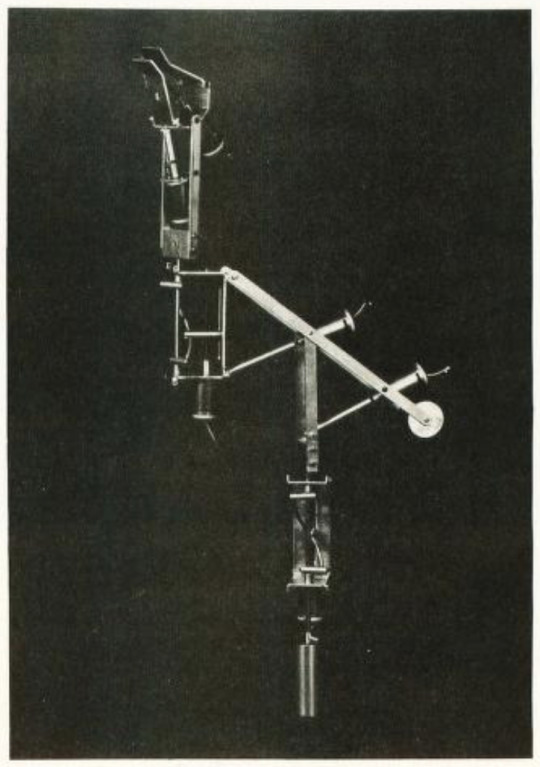
The Grivet Arm (1978) by Gallaher Research Inc., Western-Salem, North Carolina.
"Purchasing some form of "experimenter's arm" kit? There has been one attempt at a commercial kit product for the robot arm experimenter, a product which was advertised in this magazine starting last spring. I refer to the Gallaher Research "Grivet" arm, which is shown in photo 1. The photograph was taken using the kit I bought for $400 and put together one Sunday morning in September. … Mr Gallaher's robot arm was a crude start at best, for all we got is a rather shaky mechanism with six DC motors. The purchaser's inventiveness must supply the details of electronic interface and control. A suggestion, in the marketing literature supplied with the kit, is that relays be used to provide control of the 6V DC which will run the motors. This kit provided what you see in the photograph: a limited mechanical start on a complete arm which must include a mounting of some sort, power supplies, bidirectional motor drive electronics, and sensory feedback. There is not even a suggestion of how to mount and use sensors to provide feedback control of the arm in a practical object manipulation environment such as a chessboard with chess pieces as the objects.
The designer of this arm did his homework with respect to balance, for it will sit upright on its counterweight with no particular urge to topple over. The photograph was taken with the arm in this position. But if mounted in a horizontal position as suggested by the sales literature (assembly drawings, but no instruction manual, come with this device) several of the parts are under enough stress to be visibly bent. The only way I can see to practically mount this arm is by having it hang down from the shaft furthest from the hand mechanism (flipping it 180 degrees around the vertical axis of photo 1).
The Gallaher arm kit's parts are apparently handcrafted. When you think of the time and energy that went into its creation, it is obviously a bargain at $400, even if incomplete. Some of the first microcomputer kits such as the Mark-8, Altair and Sphere were similarly incomplete, and a whole industry was formed filling in the gaps to provide a complete computer system in assembled form. Therefore, we can expect more complete robotic systems as further products are offered to the experimenter. Just as "hardheaded realists" (ie: unimaginative people) scoffed only four years ago at the idea of a personal computer, I can almost hear the equivalent comments about domestic robots being uttered as I pen these words at the keyboard of my personal computer." – Byte Magazine February 1979, Volume 04 Number 02 (p6).
21 notes
·
View notes
Photo
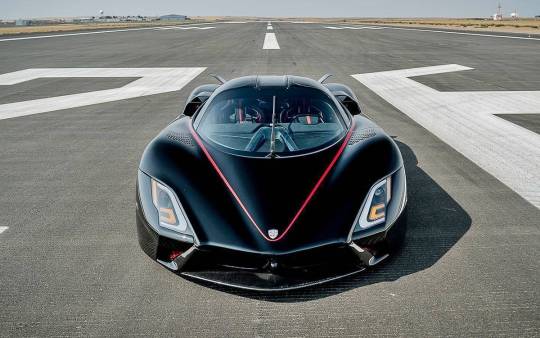





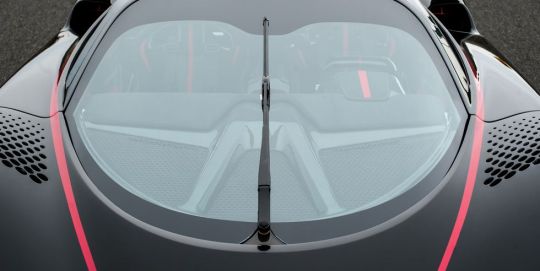
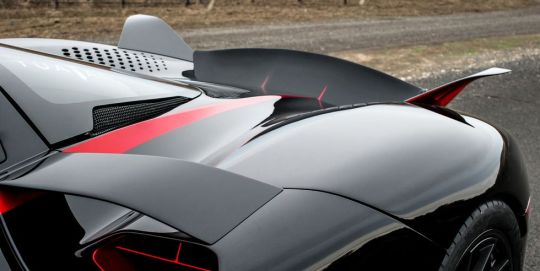


SSC Tuatara (1 of 100).
The jet fighter inspired teardrop canopy, which is suspended within the dynamic fuselage body, is complemented by vertical stabilizing fins at the rear, revealing the cars stunning speed capabilities. The streamlined design has been tuned to produce a near perfect front to rear aero balance, incredible thermal efficiency to ensure stability at all speeds up to its terminal ground velocity along with unrivaled high speed acceleration. The design of the Tuatara goes further than visual appearance. The intentional design of the body was meticulously crafted to carry the car through the air with unprecedented ease. Boasting an industry leading coefficient of drag of 0.279, the Tuatara is well balanced between unmatched aerodynamics and precision downforce at top speed.Rear static winglets, side mounted buttresses, forward static wing, and a rear active wing manipulate the smooth flowing air to distribute precision down force on the wheels. Air is also diverted to intakes that efficiently cool the powerful drive train, then expelled through perforations in the body to sustain the deliberate airflow. Downforce is systematically applied across the hypercar, providing perfect balance at all speeds.The heart of the Tuatara is an engineering masterpiece in and of itself. Years of meticulous design and engineering at SSC North America culminated into unadulterated power generated from an engine built from the ground up exclusively for the Tuatara. The smooth, balanced power produced offers both incredible performance and a unique hypercar experience. To ensure the engine met the standards of quality, performance, and durability that the hypercar market demands, SSC North America partnered with Nelson Racing Engines to fabricate and manufacture the V8 engine that powers this next generation hypercar.The Tuatara’s unprecedented power is transferred to a CIMA 7 speed transmission, integrated with a state-of-the-art Automac AMT system that operates the engagement and selection of movement in the gearbox. The system includes hydraulic driven components and sensors to produce high force engagement, position accuracy, and load control within milliseconds. The clutch and gear selection actuation are electrically operated, providing high precision and strategic operation. The core of the system is powered by a powerful automotive microprocessor, ensuring exceptional safety and performance.
47 notes
·
View notes